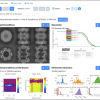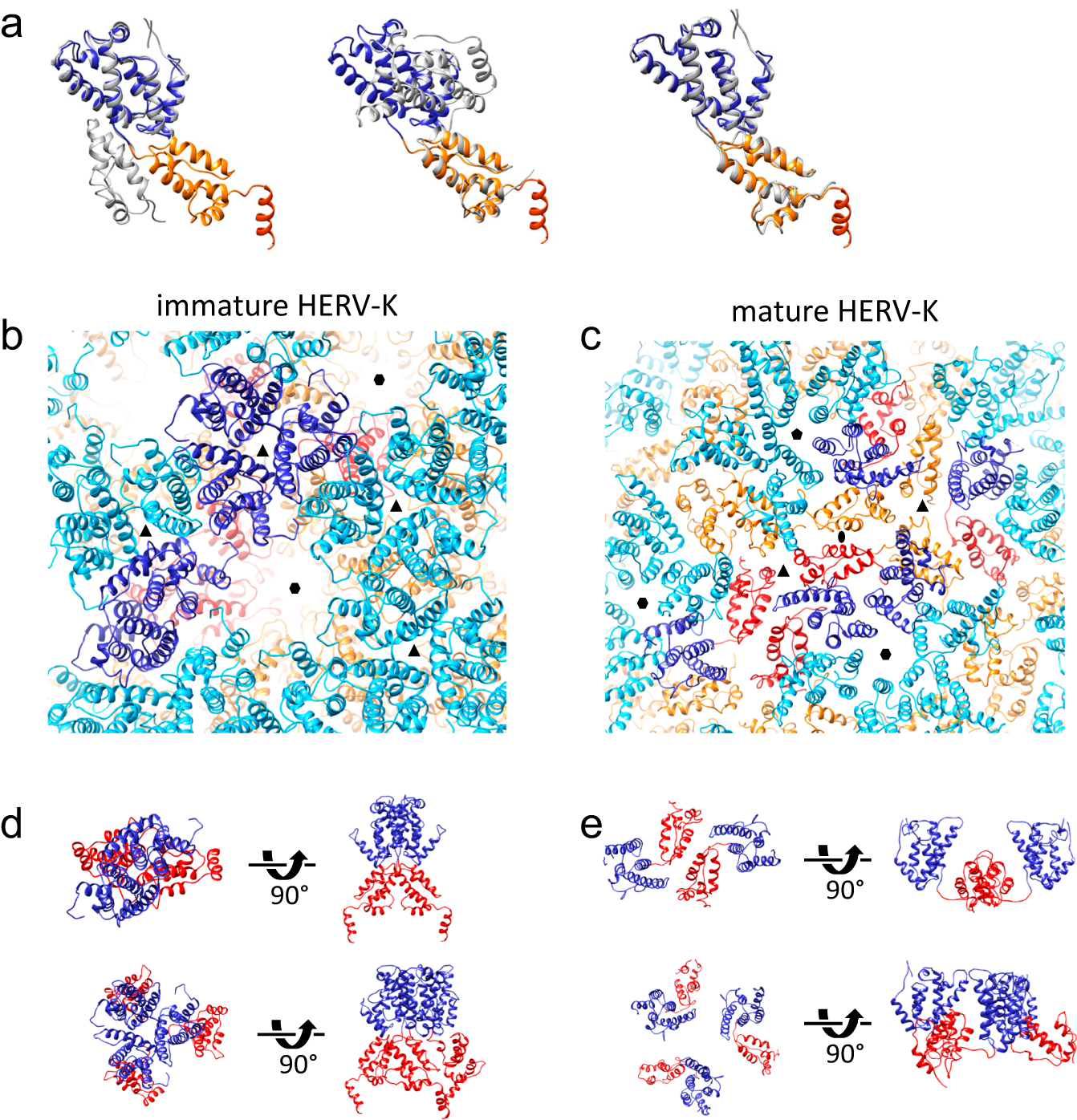Molecular architecture and conservation of an immature human endogenous retrovirus
The human endogenous retrovirus K (HERV-K) is the most recently acquired endogenous retrovirus in the human genome and is activated and expressed in many cancers and amyotrophic lateral sclerosis. We present the immature HERV-K capsid structure at 3.2 Å resolution determined from native virus-like particles using cryo-electron tomography and subtomogram averaging. The structure shows a hexamer unit oligomerized through a 6-helix bundle, which is stabilized by a small molecule analogous to IP6 in immature HIV-1 capsid. The HERV-K immature lattice is assembled via highly conserved dimer and trimer interfaces, as detailed through all-atom molecular dynamics simulations and supported by mutational studies. A large conformational change mediated by the linker between the N-terminal and the C-terminal domains of CA occurs during HERV-K maturation. Comparison between HERV-K and other retroviral immature capsid structures reveals a highly conserved mechanism for the assembly and maturation of retroviruses across genera and evolutionary time.







